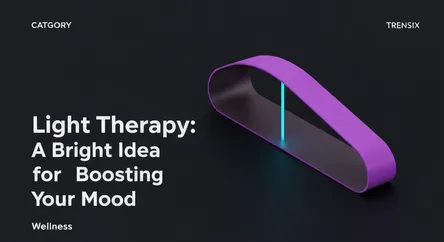Wellness
Light Therapy: A Bright Idea for Boosting Your Mood

Discover how light therapy, a non-invasive treatment, uses artificial light to combat seasonal blues, improve mood, and regulate sleep patterns.
What is it?
Light therapy, also known as phototherapy, is a treatment that exposes a person to an artificial light source. The therapy typically involves sitting near a device called a light box, which mimics natural outdoor light. The underlying theory is that this light exposure can cause chemical changes in the brain that help lift your mood and ease symptoms of depression. It is widely used to treat Seasonal Affective Disorder (SAD), a type of depression linked to the changing seasons, but is also effective for other depressive disorders and sleep issues. The light stimulates the brain to increase the production of serotonin (a mood-regulating hormone) and reduce melatonin (a sleep-inducing hormone).
Why is it trending?
Light therapy's popularity is rising due to its accessibility and non-invasive nature. The increase in at-home devices makes it a convenient option for people to incorporate into their daily routines. Originally known for treating SAD, recent studies have shown its effectiveness for non-seasonal depression as well, broadening its appeal. As more people seek natural and drug-free alternatives for mental wellness, light therapy presents a compelling option. It aligns with a growing self-care trend where individuals are empowered to manage their well-being from the comfort of their homes.
How does it affect people?
Light therapy can have a significant positive impact on mood, energy levels, and concentration. By exposing the eyes to bright light, it helps to reset the body's internal clock, or circadian rhythm, leading to improved sleep patterns. For individuals with SAD, it effectively alleviates symptoms like low energy and sadness during the fall and winter months. Studies have shown that its effectiveness can be comparable to antidepressants for some people, and it can also be used to enhance the effects of medication. While generally considered safe, some may experience mild side effects like headaches, eyestrain, or nausea. It's recommended to consult a healthcare provider before starting treatment.